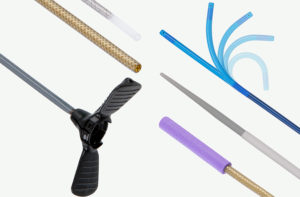Partnering with a vertically integrated manufacturer can help engineers optimize designs, improve manufacturability and accelerate new product development.
Michael Holt, Integer

(Image courtesy of Integer)
Medtech design engineers face extraordinary opportunities and challenges created by rapidly advancing clinical markets. To quickly bring innovative new products to market, it is important for medical tubing manufacturers to understand thermoplastics, thermosets, filmcast, extrusion, and value-added downstream processes vital to the production sequence.
Electrophysiology catheters, structural heart delivery systems, microcatheters and other tube-based medical devices use a range of polymer tubing constructions and materials, including polyimide, urethanes, nylons, PTFE and PEBAX.
Combining different materials and constructs is vital to achieving the desired balance of strength, flexibility, torque response, kink resistance, and other performance characteristics required in the finished assembly. A vertically integrated manufacturer can work with all of these to improve supply chain coordination and control over inputs.
Get the full story on our sister site, Medical Design & Outsourcing.

